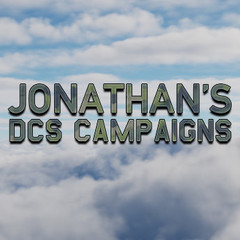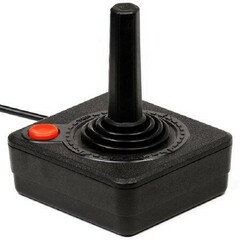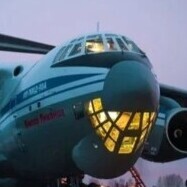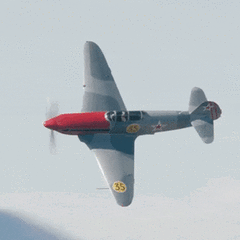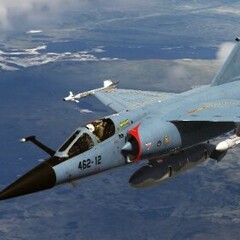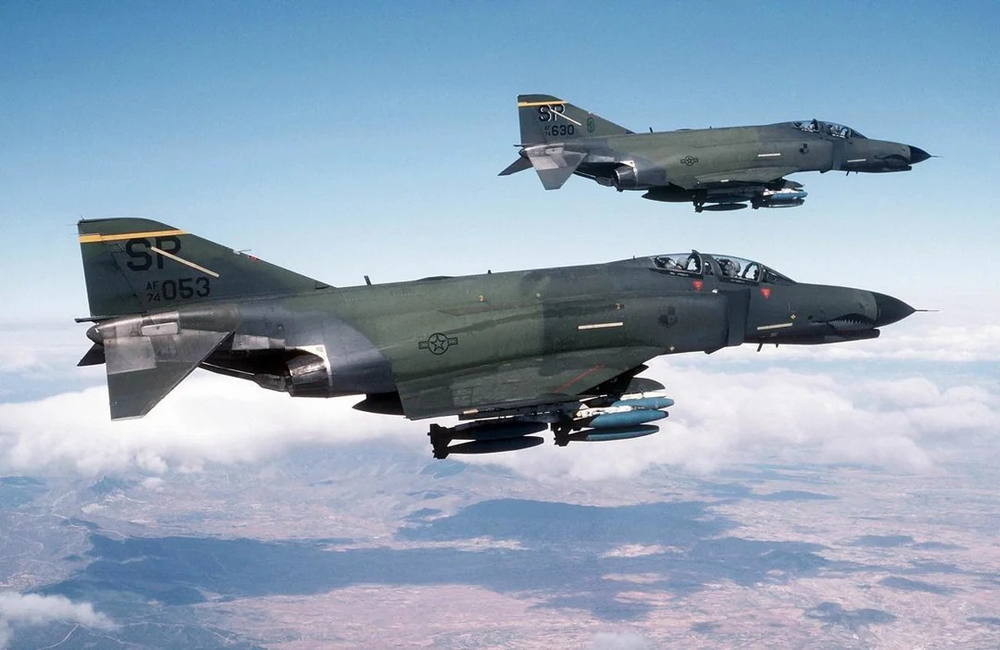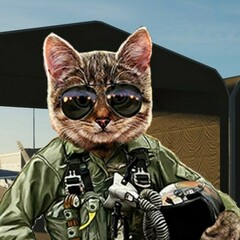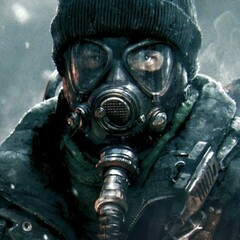Leaderboard
Popular Content
Showing content with the highest reputation on 05/17/24 in Posts
-
Surviving FAM-1 in the Phantom. Congratulations on your purchase of the F-4E Phantom II. It is a sweet flying beast, with enormous depth and versatility. It’s easy to fly while being tactically challenging. The aircraft is versatile, and the era it dominated was interesting, a combination that produces hours upon hours of engaging fun. First, don’t be intimidated by the hulking beast. The surprising little secret is that it’s easy to fly. The Phantom is honest and uncomplicated procedurally, the engines are responsive and powerful, and the slats make it feel responsive, but also stable and precise. You point it where you want to go, push the throttles up and man, does it go! As you would expect, Heatblur has delved deep into accurate modeling of systems and aerodynamics, and the result is a nuanced, detailed simulation of the F-4E. You will discover small details as you explore the aircraft and systems, they’ve even simulated the influence of engine exhaust flow on the stabilator due to its anhedral. How cool is that? From broad testing experience and SME feedback, I recommend starting with a pitch curve of at least 10 for the F-4. The simulator is faithful to the real F4E, which is sensitive in pitch. Experiment and refine your axis tuning for your controller from there. I am currently using a non-FFB stick with a 4 inch extension and heavy spring tension, 12 works for me. Map your controls. You only need pitch, roll, rudders, brakes, gear, flaps, nose wheel steering, speed brakes, trim in all axis and drag chute for this hop. Keyboard and clicking will be fine for the rest. We won’t be killing MiGs just yet. This guide is meant to be a quick and dirty “FAM-1” guide to get you in the air and safely back to earth. We’ll also have some fun in between. I know you’re eager to give it a try, so skip startup and begin on the runway, ready to launch. Fly a clean jet today, or throw on a centerline drop tank for starters. The trim will already be set (understand that due to the way the bellows/trim system interacts, until airspeed increases, the stabilator will be positioned full leading edge down on the ground), engines running, check that the flaps are down, let’s go. Normal Takeoff and Climb. Apply full afterburner, position stick full aft when Jester calls 80 knots and hold it there. Nose-wheel steering until the rudder becomes effective ~70KIAS (the NWS button must be held during operation). If you drift and need nose-wheel steering to correct, then center the rudder pedals before re-engaging. With full aft stick, the aircraft will rotate on its own when it’s ready to fly, ease off back stick to hold it at 10-12º nose up pitch attitude. Our intrepid F-4 SME’s and and recommended this technique, it works beautifully. Gear and flaps up immediately to avoid overspeed. Both have limit speeds of 250 KIAS. Min flap retract is 180 KIAS, which is only a consideration during military power takeoffs. Jester will let you know when they’re up. Terminate burner at 300 KIAS. You’re in the air, easy peasy, nothing to it. Climb at 350 to intercept .9 Mach. Mil power climbs at 350 KIAS initially require just over 20º of pitch. In Max afterburner, it will climb into the mid twenties at .9 Mach at over 30º nose high. Beast mode. Setting 3000 pph per engine results in a cruise Mach between .84 at FL 250 and .90 at FL350. That’s a fuel burn of 100 pounds per minute. Fuel planning couldn’t be simpler. Mil power at FL350 tops out just below Mach, around .97 IMN. Ease the nose down and it will go supersonic without afterburner. There is a little Mach Tuck going through transonic. Overall, the pitch changes are mild, trim is sensitive. Be quick with your thumb. Operationally, the F-4E is a Mach 2 aircraft. In level flight, it’s fastest at 35,000, and can achieve the dash one charted speed of just over Mach 2. Unload in a dive, and if you sport an adequate moustache, you can hit 2.2 plus. You can have fun figuring out the profile for that for yourself. At sea level, a low drag configuration tops out at 1.12-1.15 IMN. Adding external stores will reduce max Mach proportionately. Maneuvering Flight ROLL AUG off for maneuvering. Always roll using coordinated rudder and aileron. The higher the AOA, feed in more rudder as ailerons are less effective. Rudder only rolls are smooth and predictable. Reducing AOA increases roll rate. Experiment at different AOA’s and speeds, it will come to you quickly. Best sustained turns with typical Air to Air load outs at medium combat altitudes (SL to 15,000) range from 520-480 KIAS. Even with light pitch forces, flying a consistent, sustained turn is relatively easy. Smooth corrections pay big dividends. Control bank angle primarily with your feet. I checked the sustained turn G capability today from SL to 15,000 MSL, and it’s on the money. Gross weight affects performance of course, but if you’re doing your part, you’ll be able to hold 7.0 G on the deck, and 5.1 G while turning level at 15,000 MSL. I’m quite impressed with how stable the Phantom is at high G loads. You can already sense that the F-4E needs and loves airspeed. Use a 500 KIAS entry speed for a mil power loop, 450 with burner. A 4-5G pull up to 19.2 units will result in 200-230 knots or so over the top. It takes a lot of intentional baffoonery at very low speeds to depart controlled flight, which commonly shows up as a nose slice opposite to the direction of aileron input. The recovery controls are neutralize ailerons and rudder, unload with stick well forward (5 degrees AOA is a good target), and pull the throttles back to idle power. If the engines compressor stall, no big deal, go to idle, they recover quickly. Continue to hold up to full forward stick and let the aircraft do what it wants to do during post stall gyrations. As nose falls below horizon, and speed increases to 200 knots, you are flying again, so it’s safe to carefully roll with rudder and aileron to wings level, then pull up in light buffet, approximately 17 units, don’t exceed 19.2 units in the pullout. Spin recovery controls are rudder opposite the yaw/turn needle and lateral stick into (the primary recovery control is aileron), but perhaps the biggest shock having heard all of the lore, it is difficult to get the slatted F-4E to spin, even intentionally. That said, if the aircraft doesn’t recover, pull the drag chute. The aircraft will pitch nose down and accelerate. Either jettison the chute or let it fail when airspeed exceeds ~250knots. If you see a nose slice, it’s probably the ailerons causing it. Center the stick, reduce the angle of attack. The AJB-7 attitude indicator is so well designed that it can be used to fly precise aerobatic maneuvers, including rolling out on a specific heading, without looking outside the cockpit. The indicator is surrounded by the primary flight instruments, so in addition to the heading marks on the AJB-7 itself, you can see airspeed, AOA, altitude and the VSI in your peripheral vision, without shifting your scan. It’s all right there. Try this. Referencing the attitude indicator, pull up wings level and peg the nose exactly in the middle of the black dot that depicts 90º up, then pull the throttles to idle and do a lovely tail slide. If you get it right, the aircraft will back down, and full aft stick will make it flop forward, full forward stick will make it flop on to its back. Hold controls neutral, and it will pendulum past vertical at the bottom, where inertial dominates aerodynamics, just as a real fighter does. The AJB-7 clearly indicates where the closest horizon is to roll and pull out with minimal altitude loss. You can use it to pull out of a hairy maneuver on a specific heading, bugging out directly at home plate, where you can change out your underwear. Landing Max landing weight is 46,000 pounds. We aren’t too concerned with limitations for our hop today, but you don’t want to get into bad habits either. That’s about 12,000lbs of fuel for our configuration today, shouldn’t be a problem. At max landing weight, a stable on-speed landing AOA of 19.2 works out to 168 KIAS. If we were down to 3000 lbs of fuel using today’s configuration, on-speed would be 151 KIAS. Overhead breaks at 350-400 KIAS work well. 4000 pph will result in 400 KIAS on the run in. In this speed range, idle power in the break is fine, speed brakes are not necessary. If you do use the boards during a faster break entry, they should be manually retracted on downwind. If you are struggling to hold altitude when dirty, then you forgot to retract the speed brakes. Seat full up for landing. It’s difficult to see over the nose, so you may need to use RCTL+RSHFT+8 to raise cockpit camera. Extend gear and flaps at 250 KIAS, get the power back up as the aircraft decelerates towards 180 knots. That’s minimum speed on downwind, but slow to the “on-speed” AOA of 19.2 units (the big white square) before or during the first part of the final turn. Jester will talk you through the simple Landing Checklist. For reference, when level downwind, pitch will be 10-11º, and ballpark fuel flow with be ~4000 pph per engine. The aural tone and indexers give plenty of feedback. Gear and flap extension both cause a very mild pitch down. Flaps extend when decelerating through around 210 KIAS. Flaps will retract in the air if over-sped. Like most fighters, you’ll need to add power around the approach turn to control rate of descent. It doesn’t take much. Perform all rolling in the pattern with coordinated rudder and aileron. Trim and pitch are sensitive in the landing configuration, faithful to the aircraft, so smooth inputs are required. Fly with your fingertips. Due to the -5.25 degree thrust line of the J79 engines, adding power causes the nose to pitch down, reducing it causes a pitch up. It’s exactly opposite of the F-14. When you push with your left hand, you will need a slight pull with your right and vice versa. It’s also a happy little airplane during approach, with the AOA tone beeping and chirping. In fact, it’s quite easy to get on the runway in one piece. All of that cheerful noise should be a clue that the Phantom is flown while referencing AOA in the landing pattern. If you are struggling, try flying a little fast, with the AOA needle at the bottom of the white, “on-speed” index mark, around 17-18 units. We aren’t landing on the ship, so a little fast is fine as you get familiar, you have plenty of runway to work with. Use the “bug on the windshield” for glide path reference. Just like landing a Cessna. If you are addicted, you’ll quickly wean yourself off of HUDs. If you get behind the power curve, above 19.2 units or more, understand that excessive AOA causes enormous drag that if unchecked, will dramatically increase descent rate. To recover, forward stick to reduce AOA immediately is critical, while adding lots of power. You need both, don’t try to power out, reduce AOA with pitch. Danger of stall buffet and nose slice lurks above 25 units. In the flare, you may need to look to the left or right through the windshield side panel to see the runway, like Lindbergh did flying the Spirit of St Louis. It’s where you look when landing tail draggers or even fat nosed single engined Cessnas. Some instructors call it “The Lindbergh Reference”. I find that carrying power into the flare makes for a smoother landing. Arrest the rate of descent before you ease the power and let it settle. If you are fast, then pulling more power in the flare is fine. When you try a carrier landing, and we all know that you will, keep in mind that you will need a significantly wider abeam distance. The F-4E lacks the BLC flaps of the Navy versions, so you’ll be flying a much faster approach turn with a wider turn radius. The LSO’s will be nervously eyeing the net. Good luck. Single engine approaches are simple. Only real change is you a little faster, at 17 units, the yaw due to asymmetric thrust is easily controlled with rudder, even in burner. Fly a straight in approach using gentle bank angles and you’ll be fine. It helps to get rid of most of your fuel before landing with an engine that is “uninterested in further toil”. The F-4E also has a nifty flight director on it’s remarkable AJB-7 attitude indicator that makes ILS approaches a piece of cake. ILS freq is set on the pilot’s left console. The controls for what drives the needles are on the lower right side of the instrument panel. Give it a whirl, flight directors are amazing. After touchdown, lower the nose, pop the chute, hold the stick aft, and enjoy Jester’s compliments on your landing as you roll out. I bet that you land it on the first try. When clear of the runway, there is nothing like opening the canopies and enjoying the sound of two J-79’s while enjoying some fresh Phantom Air. Soak up the satisfaction of a flight well-flown as you taxi back to the ramp. You just experienced what it is like to fly an iconic fighter that continues to menace the skies even today. Damn, that was fun. Maybe that's why Jester loves to say, “We have the best job in the world.”26 points
-
MASSUN92´s Animated ground crew and lights MOD -- DOWNLOAD IT FROM: HERE! What a journey, right? As mentioned in today's newsletter (May 17, 2024), the asset pack will become part of the DCS core, allowing everyone to use the assets in their missions without needing to download anything. This does NOT include the animated ground crew and lights, which will still be available for download from the link above. ------------------------------------------------------------------------------------------------------------------------------------------------------ Before addressing some questions, I would like to thank all of you, the community, for your support and positive vibes. This achievement is also partly yours. On one hand, your support for the asset pack pushed me to make it better and bigger. On the other hand, I'm sure ED wouldn't have noticed the asset pack if so many people weren't using it and creating wonderful bases with it. So feel proud, we've achieved something fantastic! ------------------------------------------------------------------------------------------------------------------------------------------------------ - What's going to happen with the mod? I will continue developing content because I enjoy doing it. I love seeing what I create come to "life" within the simulator. According to my discussions with the people at ED, there's a possibility of adding more objects in the future, so feel free to leave suggestions below. - What will happen to the missions created with the latest version of the mod? As far as I understand, and I could be wrong, they should work fine WITHOUT the mod installed. - Will there be improvements? We have an agreement where I will make some minor future corrections to the models. Beyond that, I don't know what the future holds. ------------------------------------------------------------------------------------------------------------------------------------------------------ - Who I am? Hi to all! My name is Patricio Massun, I'm a 3D artist and architect from Argentina. My job is mostly related to arch visualization and asset creation for renders. I use this mod to practice some lowpoly, game-ready, real time rendering technics. I use Blender for all my work. All the models of the mod are created entirely by myself and the textures are from ambientcg (old cc0textures.com). All the export process is based on the EDM exported made by Tobi and use the tutorials from Grajo (Without them the mod would not have been possible). - About the mod:23 points
-
Congratulations @Massun92 for the Assets Pack. It's great news that he will be added to DCS World officially. Now we will have better missions with more life, thanks to you. We also have to thank ED for adding this great package. May more units of large content creators be incorporated into the DCS core.17 points
-
17 May 2024 Dear Fighter Pilots, Partners and Friends, For the next DCS update, we are preparing eagerly-awaited new features such as the FCR Zoom and C-Scope for DCS: AH-64D and FCR and TADS LINK. These features make the AH-64D an even more deadly force on DCS battlefields by increasing situational awareness and enhanced target identification. Patricio Massun is a 3D artist from Argentina who created a free asset pack for DCS that contains a variety of ground models, fortifications, and airfield assets. Please join us in thanking Massun for his help to include these directly into DCS. We are testing the models and plan to include them in DCS for free! Furthermore, the DCS: F-5E Tiger II has received various enhancements such as the RWR improvements, more realistic radar ground clutter, and the addition of the AIM-9J Sidewinder. Please read the details below and stay tuned! Thank you for your passion and support. Yours sincerely, Eagle Dynamics AH-64D Update Overview Upcoming Update release: 21 May, 2024. For the next DCS update, the AH-64D will see the addition of three important features: the Fire Control Radar (FCR) Zoom and C-Scope functions and the LINK function for the FCR and TADS. Both are incredibly useful when engaging targets. The Zoom function allows you to zoom-in on the FCR Next to Shoot (NTS) target at a 6:1 ratio, or you can use the display cursor on the FCR page to select an area to zoom in on. This is very useful when engaging closely grouped targets. The C-Scope function, also selected from the FCR page, allows you to place FCR target identification symbols on both your Helmet Mounted Sight and the CP/G TEDAC display. This is an invaluable tool for building situational awareness, and AH-64D players without an FCR installed can still see these symbols using the datalink. Both items are previewed in this DCS: AH-64D FCR ZOOM & C-SCOPE video. The next update will also introduce the sight select LINK function to the AH-64D. This allows both the CP/G and Pilot to slave the TADS video to the FCR NTS. This will allow you to visually identify FCR targets through the TADS prior to engagement and allow you to perform battle damage assessments after an engagement. LINK also allows you to slave the FCR to the TADS. You can learn more about LINK here DCS: AH-64 | FCR/TADS LINK DCS Core Massun92’s Assets Pack We would like to thank Patricio Massun for creating his asset pack and his work to assist with integration of the 3D models as part of the DCS Core. Massun’s Asset Pack for DCS includes over 100 terrain objects including fortifications and ground models that can be placed across all DCS terrains. These models are very well designed and aid to create more realistic and immersive missions. For more information, please check out the Massun Asset Pack for DCS forum. We are currently testing all the models and planning to include them in the next DCS update. F-5E Tiger II Development Progress A favorite of Cold War pilots, the DCS: F-5E Tiger II is a very capable, twin engined, light-weight fighter with excellent close combat and ground attack characteristics. This beautiful aircraft was easy to deploy, maintain and operate and much loved by its pilots. For the next DCS update, we’ve made several improvements based on your feedback. These include: The Radar Warning Receiver (RWR) now displays radars in search mode. Ground clutter on the radar is now more accurately represented based on altitude and scanning elevation. We’ve added the AIM-9J version of the Sidewinder air-to-air missile. TACAN operation with no weight-on-wheels has been corrected. It is no longer possible to uncage the AIM-9B Sidewinder in pre-launch mode using the Missile Uncage Switch. We hope that these F-5E improvements will further your enjoyment and make the F-5E an even better addition to upcoming Flaming Cliffs 2024. Thank you again for your passion and support, Yours sincerely,12 points
-
Congratulations @Massun92 and thank you for your endless work to bring us this into the core game! This really brings DCS World alive, i'm lost for words about how delighted I am that ED and you have reached this milestone!10 points
-
Ladies and Gentlemen, The time has come for me to say goodbye and to step down from being a Harrier Community Manager for Razbam Simulations. I believe that most of you have noticed that I've been less and less active on Discord and on the forums these last months. Indeed, since last September I have been getting into a new job that has given me far less free time to dedicate to my volunteer work for the DCS Harrier community and RB. Leaving had been on the back of my mind for quite a while but as the dispute rose up I decided to stay and help with what I can. It has helped me further confirm my decision, I can't keep going on without it affecting my personal timeline. Now that the dust has settled a bit, I must go. I want to sincerely thank all the awesome dudes here at Razbam for giving me the opportunity to be a part of the DCS adventure, I have learnt more than I could ever imagine. It was a blast. I also want to thank each and every one of you lads, for the memes, the deeply interesting discussions, the tomfooleries, the 3am retro-engineering of way too complex systems, for sharing your love of military aviation, and of course for your never ending thirst for an accurately simulated Harrier module. Wishing you all the best. Godspeed, Samurais Cheers, A.J.7 points
-
The atmosphere that can be achieved in the Caucasus using Bandit's Weather mod and Barthek's Snowless Winter textures is impressive. It looks like a new map. Thanks guys.6 points
-
What a silly thing to complain about. His name is never even said out loud in game anyways, it's just a label on the control wheel and a better way to refer to the system instead of something bland like "the backseat AI". No one is stopping you from calling him whatever you want. It's a program that just so happens to be named Jester, and it'll be called Jester in every single two-seater aircraft Heatblur make, including the A-6 and naval F-4. No reason to change it.6 points
-
Today's news is fantastic! We soooo needed this integrated in the game! Now I can adapt proper HESCOs for the FOBs in RotorOps, create airports that look alive and new FARPs and outposts in mission templates etc. Everything I never could, because it would require people to download and integrate stuff into their installation of DCS before joining a mission or creating a RotorOps mission. I hope ED looks further into integration of community content. I understand it is critical to ensure it doesn't infringe on Intellectual Property, but if it's an original creation of a community artist, it can be a great asset for mission builders.5 points
-
Can we please get the overdue drogue basket & hose physics. It was talked about their being a rework when the hornet was releasing. That was almost 6 years ago. THIS IS NOT ME BASHING ED Currently the drogue basket just hangs behind the tanker in a fixed position. There's a DCS video mixed with interstellar about a tanker spinning out of the sky and the basket is in it's normal fixed position not swinging around or anything. And a player is able to connect to the basket and take fuel. We all know visuals sell, and when players see other games/sims have drogue basket/hose physics it makes the DCS community want that in our beautiful simulation. We got nice fancy clouds real quick when other sims pushed out nice looking clouds. Is making radar simulations easier than making drogue basket physics? Again was talked about almost 6 years ago. It would be so cool to see the fuel purge during a connect/disconnect or a improper connection. Having the basket dance around behind the tanker while players are waiting for the right moment to push into it. The hose waving around as the aircraft makes the connection.4 points
-
I'm seriously frustrated by Early Access politics. Im playing DCS from Flanker 2 era and i'm trying stay optimistic, but now beginning to believe that it is a pernicious path. becouse this few facts for example.... F/A - 18 Hornet. more like 9 YEARS develoment and still not finished. 9 Years. ( A10C with KA-50 has FINISHED with better damage modules in much shorter time, but not EA exist in this era.. ) DCS Supercarrier : 5 years in development (4 in EA) and update progres is very slov. Briefing room was announced 3 years ago. In the same time was finished huge AAA titles in Games or Films. DCS: Sinaj. Last roadmap update 14 july 2023. Absolutly dont follow promises and no info from developer. I want money back. DSC F15E Strike Eagle + other modules from RB No commutication to users, no explanation situation about razbam. No updates in laste patches. Now is just next unfinished modul with unfilled promises, but payed. If this module not continue in progress, return money. Other reported minor problems have not been fixed for years, for example GBU-28, static objects activate/deactivate in ME, MFD maps scales and others... And story can continue with more modules... I am no longer interested in new module announcements. i payed, and I was patient, but you don't keep your promises. your profit has become dependent on Early Access announcing, and not on FINISHED works. For me "thank you for your patience" it's not enough anymore. Im leaving DCS Afganistan, DCS Chinook and others in future, because these are just other unfinished modules. until you dont change access to EA. sorry.4 points
-
Also happy to see the F5 get some love, and yes some texture work would be very welcome.4 points
-
Glad to see the F5 get some love. Would be great to see it get a model and texture upgrade, similar to the A10.4 points
-
As a mission creator - thank you for taking the time to develop assets for us to use and play with!4 points
-
FM at 98 % ! The downwash and transition was sent to the MEDUSA system today. The physical formulas work together and calculate all necessary situations. The downwash/ground effect is calculated from all 10 sectors per rotor blades. As the air cushion moves at increasing speed, it reacts to external influences such as OAT, air density, wind and attachments to the helicopter. Subtleties such as the pointer deviations when the tanks slosh during control inputs, or turbulence on the pickup such as the clib/dive indicator are implemented as an extra feature. Next, the BO-105 will be released to the SMEs and BO-105 pilots for testing. Pilot/CO-pilot is already in the cockpit. The screenshot shows the status without normal/roughness maps: btw: Ignore the rubber pen4 points
-
Good Morning Everyone. I'm almost finished with the Italian Comandante Class Frigate. It takes time to figure out what textures work best for the 3d models but I think I got that figured out now. It's been slow because of my health but I do what I can when I can. Comandante Class Frigate Foscari Class is 98% complete. Weapons work well. I will finish her this weekend and start work on the Italian FREMM Bergamini Class Frigate and I will also create a version for the Egyptian Navy as well they operate two of the FREMM Class Frigates. Progress photos of the Foscari are below along with Liveries. Stay Tuned.4 points
-
Unfortunate bug that had been introduced a few days before the build used by the Content Creator. It has been fixed already[emoji106]3 points
-
Very excited for this! Been flying a lot of F5e lately and it always seemed very wrong to have to switch between radars that are searching and radars tracking you.3 points
-
Will F5 get facelift too or just systems?3 points
-
17 мая 2024 года Дорогие друзья, В предстоящем апдейте вас ждут долгожданные обновления FCR – РЛС управления огнём для модуля DCS: AH-64D. Будут реализованы функции FCR Zoom (сужение вида) и C-Scope (вывод радиолокационных контактов в монокуляр). Также, станет доступна функция корреляционного сопоставления информации FCR с TADS. Новые возможности делают AH-64D ещё более смертоносным и существенно повышают ситуационную осведомленность пилотов на поле боя. Патрицио Массун (Patricio Massun) – 3D дизайнер из Аргентины создал весьма объемное расширение для объектов DCS World, которое будет бесплатным для всех пользователей DCS. В него войдут объекты фортификации, аэродромное оборудование, широкий набор новых наземных юнитов, в том числе доступные для управления. Присоединяйтесь к нам, и выразите свою благодарность талантливому художнику и моделлеру за его большой личный вклад и проделанную работу. Объекты находятся в стадии тестирования и станут частью DCS World. Модуль DCS: F-5E Tiger II получил заметные обновления: улучшена система предупреждения об облучении (RWR); “математика” при расчёте радиолокационных помех от земли стала более реалистичной; стали доступны ракеты AIM-9J Sidewinder. Читайте подробности ниже! Благодарим за энтузиазм и внимание. Искренне с Вами, Команда Игл Дайнемикс Обновление AH-64D Релиз: 21 мая 2024 В следующем плановом обновлении для AH-64D вы увидите: функцию Zoom – приближения (сужения вида) для FCR; отображение радиолокационных контактов через монокуляр и TEDAC (C-Scope); корреляционное сопоставление контактов (FCR/TADS LINK). Улучшения окажутся чрезвычайно полезными при боевом применении вертолёта в сложной обстановке. Функция Zoom позволяет 6-тикратно приблизить вид на радиолокационной картинке FCR, что особенно востребовано при детализации целеуказания среди близкорасположенных целей. Функция C-Scope, которую также можно выбрать на странице управления FCR, позволит вывести идентификационную информацию о целях на дисплей TEDAC оператора и отобразить через монокуляр пилоту. Это очень полезная фича, даже для случая, когда FCR не установлен, т.к. информация о целях может быть получена через даталинк с других вертолётов. Смотрите инструктивное видео по теме DCS: AH-64D FCR ZOOM & C-SCOPE video Третья полезная функция, которая станет доступна - это корреляционная связь радиолокационной обстановки и видеосистемы. Она позволяет связать между собой изображения FCR и TADS и привязывать обзор FCR к изображению на TADS перед тем как применить оружие, а также произвести визуальную оценку результатов после применения оружия. Связь работает и в обратную сторону, т.е. TADS можно привязать к текущему направлению обзора FCR. Смотрите соответствующий видеогайд DCS: AH-64 | FCR/TADS LINK Ядро DCS Комплект расширения Massun92 Мы хотели бы поблагодарить Патрисио Массуна за огромную проделанную работу и подготовку к интеграции 3D-моделей в ядро DCS. Пакет объектов для DCS от Massun включает в себя более 100 юнитов и объектов, включая укрепления и наземные модели, которые можно разместить на любой карте DCS. Эти модели очень хорошо спроектированы и мастерски исполнены; они прекрасно дополнят игру и сделают миссии ещё более увлекательными. Для получения дополнительной информации, пожалуйста, ознакомьтесь с соответствующей информацией на форуме. В настоящее время мы тестируем комплект и планируем включить его в следующее обновление DCS. F-5E Tiger II Отчёт о разработке Любимец авиаторов эпохи холодной войны – DCS: F-5E Tiger II это легкий многофункциональный истребитель с двумя двигателями, который прекрасно подходил как для воздушного боя, так и для атаки наземных целей. Изящные формы, простота в эксплуатации и обслуживании сделали его любимым самолётом многих военных пилотов. Основываясь на ваших отзывах, в предстоящем обновлении мы добавим ему функционал, которого ему не хватало: Система СПО (RWR) теперь будет отображать РЛС в режиме поиска; Радиолокационные помехи, вызываемые земной поверхностью будут отображаться более правдоподобно с учетом высоты полёта и текущего возвышения антенны радара; Самолёт сможет использовать ракеты AIM-9 Sidewinder версии J; Корректная работа TACAN после взлета; Для УР AIM-9B Sidewinder отключена возможность сделать uncage ГСН при захвате цели, как в реальном образце. Надеемся вы оцените улучшения, особенно с учётом того, что версия самолёта с упрощённым управлением будет включена в комплект Горячих Скал 2024. Ещё раз благодарим за всемерную поддержку и увлеченность!3 points
-
Hi ! Airport lights could be improved in DCS. Raal world runway lights are (bi)directionnal. You see them much better when on axis, and they become almost invisible when you're abeam (or well above) the airfield (MSFS is pretty good at it). In addition, they look too large in the sim. Actually, they look the same as in night cockpit videos, which does not reflect reality (due to camera sensor gain). Unless in a high humidity or dust ratio, there's virtually no "halo" around these lights. Thanks3 points
-
3 points
-
And most importantly remove the magic magnet connection and add collision model.3 points
-
You are correct, sir. But there is a problem with Early access thing. It takes years to get out of it. For example I have Supercarrier module almost since Day 1. I really enjoy it. F-14 - IFLOLS fix news was "wow!" for me. But still it needs years to introduce Vulcan, announced features, etc. I could pass away till the release date.3 points
-
Yes, an up-to-date status would be great. With all the new announcements that are coming up: I always hope that it will be said: “The F1 M will come in the next update”. Really a great module.3 points
-
A small demo video that i recorded using this must have mod. Thank you Massun92.3 points
-
It’s great your asset pack is being added as standard to DCS. Congratulations and thanks. With Afghanistan on the way we could do with some additional units. Since in both NATO and Russian wars the opposition was an insurgent force hiding within a civilian population it’s clear we really don’t have a great variety of suitable assets. If you read many real life accounts a large part of the challenge was to pick out insurgents and avoid civilian deaths and collateral damage. I’d be particularly interested in Afghan civilian units - people, animals, buildings, motorbikes, cars, trucks, agricultural equipment. At the moment if a person is placed on the map they are all (apart from the air show crowd) of a military disposition.2 points
-
Well, we're recieving an RAF skin since the guy that developed the radar requested it. Only skin coming with it that's labelled fictional. Unlikely they make any others and I won't be using it personally since I don't like how short nose skins look on long nose Phantoms.2 points
-
2 points
-
You're wrong. Sim is supposed to simulate pilot vision and show us the world as best as our display hardware allows. Naturally the better device, the higher resolution, the more detailed image, thus better spotting. This is the way. Not fake balancing contact sizes, unrealistic scaling, nonsensical dots and squares.2 points
-
Эх, если б кто то сервер замутил на этой карте по мотивам PQ конвоев.. Разведка, прикрытие, поиск подлодок и т.д.. да с поршнями, да в родных ливреях (болт, спит, хотя бы москито вместо илов с пешками) купил бы карту не задумываясь. Тогда бы и для И 16 подходящие бы сценарии были бы, а? Да еще и Ла - 7 весной в каком нибудь году должны появится, как предрекли DEVELOPMENT NOTES древние скрижали. Но фиг там, все зациклились на это норманди. А так... Смотрю сейчас в мультиплеере, еще одна пустая карта кажись А да, еще и с зимним вариантом вопрос2 points
-
I find it odd we get so many very different opinions on how the map runs on people's system in VR. I had another go at it yesterday: empty map with 1 flyable aircraft and some weather, and I get 16fps down low - I have to climb above Angels 15 to get framerates that don't make me throw up. With the very same DCS settings I get 40+ fps down low on other maps2 points
-
@Massun92 this is truly one of the best news that I've seen on the DCS newsletter on a long time, congratulations2 points
-
Looking at today's newsletter, this might actually have been fixed by ED now!!! I can't believe it, I thought I wouldn't live to see the F-5E improved by them. Gotta test this tonight.2 points
-
No and no, in that order. No, it's not a failed idea because no, higher resolution is absolutely and categorically not supposed to give you better spotting. If it does, the spotting is fundamentally broken. Spotting should as far as possible be wholly hardware-agnostic and as well as it ever can yield the exact same result regardless of resolution and display system. If it doesn't do that, then it has truly failed. The only way to achieve this reliably in the edge-of-visibility realm is with a resolution-countering dot system. Now, as it happened, the previous dot system was so poorly implemented that it gave rise to that kind of failure: different contact sizes depending on hardware, even though its foundation was one where that could be solved. The new system attempts — and to some degree actually succeeds — to give everyone the same target size. It is just a bit… ehm… naive, let's call it, about what display systems are used and how that translates pixel size in to visual size. So yes, higher resolution should indeed see larger dots. No, that is not a failed idea. In fact, it is the only viable idea. No, that doesn't mean dots is inherently correct, but correct dots are more correct than any other solution can even hope for. We are not there yet, so yes, more tweaking is needed, but no, that doesn't mean we have to discard the whole idea. Indeed, it's just a matter of tweaking. And providing constructive feedback for those tweaks. Eg. at what distance should the dots be fully faded into the background. At what distance should the dots be overwritten by 3D models. On what display time should those cross-over points translate into what size dot. And how do we solve the middle-distance problem where we should have be able to identify aspect to a much higher degree? No. it's not just a solution, but a complementary one, and the best one available. The whole point and purpose of scaling is that, counter-intuitively, it makes it more realistic. Cognition is not pure trigonometry, as it turns out, and to make it realistic, it is cognition that needs to be simulated.2 points
-
@Hez thanks for the TRK, I will check if it reproduces or not in our internal build. And yes, in this thread I've been refering to the regular May update, which as far as I'm aware coincides with the F-4 launch. Edit: I'm not 100% sure the update will coincide with the release, but the dates suggest so.2 points
-
One piece of thought for people that are thinking about getting either one, is the amount and way of individual modding/tuning the devices. For me, who is fond of 3D-printing, the Rhino is more accessible. Building it even gave me ideas for a FFB conversion of my MFG pedals. Things like that would be much harder for me to do in wood or metal. That could be the other way round for people that have metal workshop equipment of course. Either way. Even people who are not planning to do any DIY should be aware, that FFB requires some tinkering - at least you need to setup your profiles.2 points
-
2 points
-
That are great news. If you read it like that, you might get the impression that we might be able to take off with the Bo-105 this year...2 points
-
The thing is, I have the advantage of looking at radar and aircraft all day. I can see what real aircraft look like at different ranges and sky conditions. It appears the dots appear at about 20 miles in VR. Even the C-5 would be difficult to see @ 20 miles. Anything smaller would never be visible that far away. However, it occurs to me that another part of the problem is that the contrast of the dot is too much. It needs to blend into the background much more. It should be difficult to see. As it is now, the dot functions better than short-range radar...2 points
-
2 points
-
NOTE. As always, these videos provide a preview of an upcoming feature to assist you in understanding a new feature. Later, it is quite possible that the feature will change, and the feature functionality has changed. As much as I’d like to, I lack the time re-record these videos. FCR Introduction: • DCS: AH-64D | Fire Control Radar Introduction In this DCS: AH-64D video, we’ll discuss the LINK sight select that allows the TADS to be slaved to the Fire Control Radar’s Next-To-Shoot target, also called the FCR NTS target; or slave the FCR centerline to the TADS line-of-sight location. When linking the TADS to an FCR NTS, it is a valuable tool to visually identify the target and determine its state prior to an engagement, or perform Battle Damage Assessment, or BDA, after an engagement. This will cover the basics of using LINK. For more detailed accounting, please consult a future edition of the Early Access Guide which will be updated with explanations for using LINK. First, let’s use the FCR to scan ahead of us and create an NTS. If you have not viewed it earlier, please see the earlier instruction videos on using the FCR. Above is a card and I’ll list links in the video description. We’ll also bring up the TADS on the TEDAC. You’ll need to make sure neither the TADS nor FCR are set as your acquisition source and that the TADS is not being used as an active night vision (NVS) sensor by either crewmember. This is very important and may be a common point of failure when attempting to use the LINK function. With an NTS on the FCR display, all we must do is press down on the Sight Select switch, located on the Right TEDAC Handgrip. When linked, FCRL is displayed on the left side of the High Action Display or HAD. It will be preceded by a C if linked from the CPG seat or P if from the Pilot seat. Note that as I cycle the NTS through the shoot list in target priority order, the TADS automatically slaves to the new target. You can still change the TADS sensor between FLIR and DTV or select a different field-of-view; however, in this situation, TADS laser tracking, Image Auto-Track, and laser range finder designator are disabled. If you wish to manually slew the TADS while LINK is still enabled, press the Slave button. This will allow you to search and identify other targets in the vicinity of the FCR NTS target. However, it is important to remember that the FCR is still your selected sight for targeting and weapon employment, and the TADS is only being used as a sensor for target identification or BDA. To return the TADS to the current NTS target, press the Slave button again. If you wish to use the TADS for targeting, such as engaging the target with a laser-guided missile, you must select TADS as your sight using the Sight Select switch. Now that the TADS is the sight, as indicated on the left side of the High Action Display, you can now laser designate and engage targets first acquired using the FCR. Let’s now look at using this from the back seat. As before, let’s create an NTS from the FCR page. Next, from the other display, select Menu and then Video from the top, or you can simply press the VID button on the bottom right corner of the MPD itself. On the right side, select TADS underlay and select TADS again from the top to enable a full screen view. You can now see through the TADS with the ability to adjust the video aspect on the left side. We can now press down on the Sight Select switch to slave the TADS video to the NTS. Note that P for Pilot FCRL is indicated in the HAD. As mentioned before, the acquisition source cannot be TADS or FCR. As with the CPG, this allows the pilot to visually inspect a target acquired by the FCR, but keep in mind that the Pilot cannot change the TADS between FLIR or DTV or change the TADS field-of-view. Jumping back to the front seat, we can also first acquire a target using the TADS and then link the FCR scan to that target. To do so, we’ll first make the TADS our sight and slew it to a new target. Once satisfied and TADS still as our sight, we press down on the sight select switch to select LINK. The FCR centerline then slaves to that location and TADSL is displayed in the HAD. When the FCR is linked to the TADS, which is only possible in the CPG seat, you can perform FCR scan bursts or adjust the FCR scan size, but again it is important to remember that the TADS is still your selected sight for targeting and weapon employment, and the FCR is only being used as a sensor for target detection and classification. What really makes linking the FCR to the TADS so useful is the FCR’s ability to speed up the reconnaissance process, by highlighting any potential targets within the TADS field-of-view that may not be immediately seen, such as cold targets within the FLIR, or camouflaged targets within the DTV.2 points
-
For me having ED doing all the missile stuff is better than what i was before, namely for years MiG21's R3S was completely different than AIM-9B, even though one is a direct copy of another. Key problem with ED that changes and updates it make literally takes years....x2 points
-
Erstens, sollte man es jedem selber überlassen, ob man sich von jemandem auf DCS ausbilden lassen möchte, oder nicht! Ja, das sind keine echten Fluglehrer, aber in so manchen Gruppen/Flugschulen sind auch echte Piloten dabei, die Ihr ganz eigenes Wissen zu dem der DCS Spieler hinzu bringen. Zum anderen haben die meisten dieser Personen aller höchsten Respekt verdient, da enorm viel Arbeit und Mühe in die Ausbildung anderer gesteckt wird. Zweitens, ist solch ein strukturierter Rahmen manchmal besser, als all diese ganzen YouTube Videos oder Trainings in den Staffeln. Ich bin selber Mitglied in einer Staffel, in der ich enorm viel lerne. Und auch dort wird enorm viel Freizeit investiert, um anderen Mitgliedern etwas beizubringen. Aber mir fehlt da ab und zu die Struktur und vor allem die Details. Ich habe erst im Dezember 2023 überhaupt mit Flugsimulation angefangen, und mir fehlen ab und an diese kleinen Details, die nachher viel ausmachen und manch andere erst über Jahre selbst erlernt haben. Und genau das ist der Grund, warum ich jetzt bereits seit fast über sechs Monaten auf eine Ausbildung in der OFS warte. Start-up, Start, Landung, Overhead Break, das sind alles Dinge, die ich mittlerweile (mal gut, mal weniger gut) hinbekomme, aber dennoch bin ich mir sicher, dass ich noch viel dazulernen kann. Und genau darum geht es mir! Und ich bin der festen Überzeugung, dass es auch der OFS genau darum geht! Ganz dem Motto: "Fliegen lernen leicht gemacht!" Es ist einfach nur Respektlos, all diese Menschen so abfällig abzuwatschen, die soviel für andere tun, ohne etwas dafür zu verlangen!2 points
-
the problem was that the cockpit of the ram I download it from sketchfab and wasnt made by me. That is way I prefer to remove it from the asset pack and I will remade it from scratch, with better quality yeah, I wasnt able to spawn under the shelter neither. If someone knows any solution let me know2 points
-
Recently Browsing 0 members
- No registered users viewing this page.



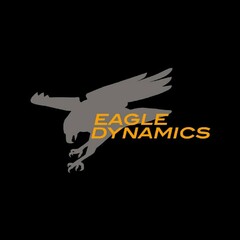


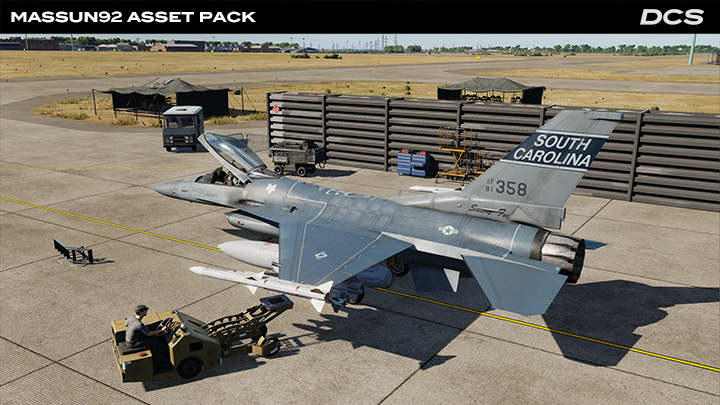
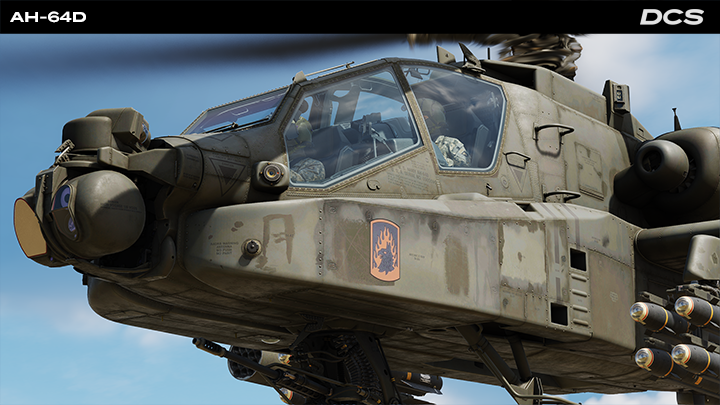
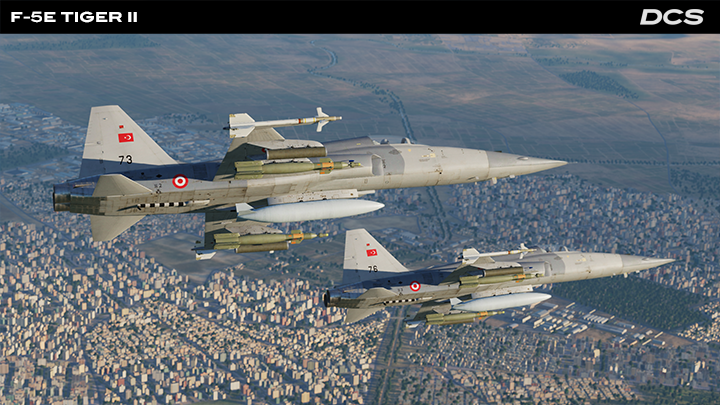

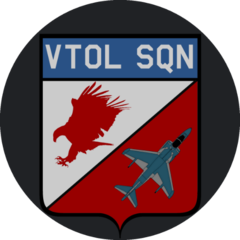
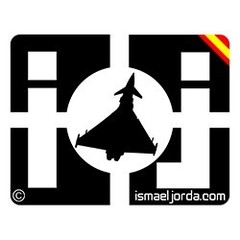
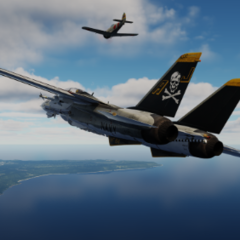
.thumb.jpg.87e2c3a17db21e54e093d1322f3b268f.jpg)
